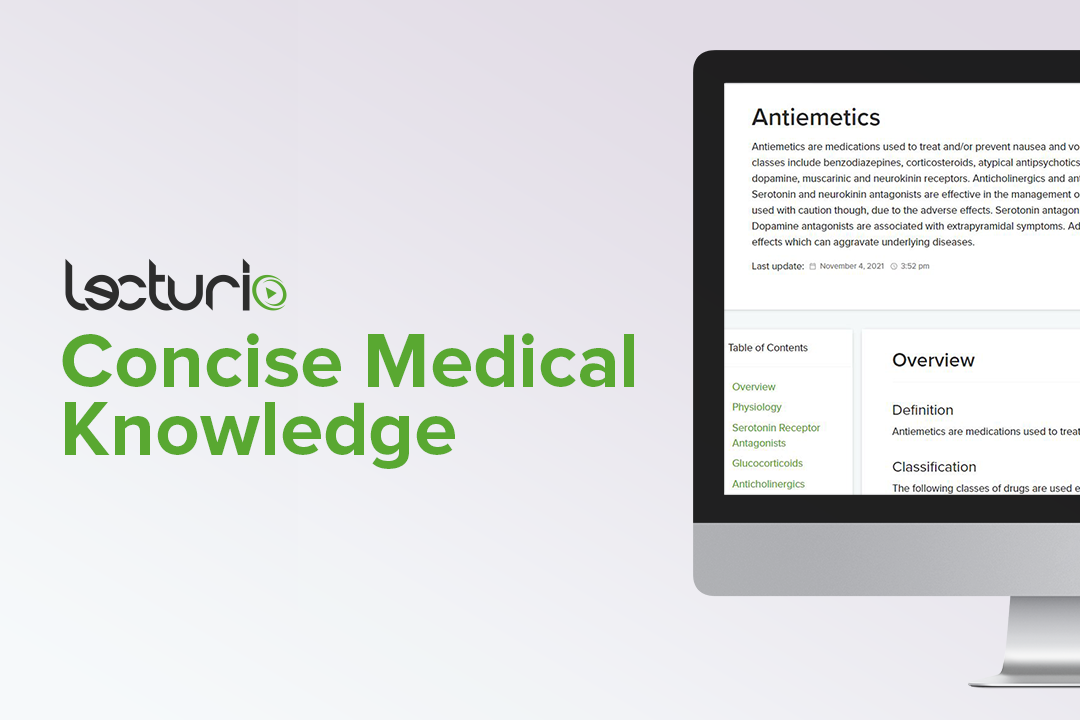Playlist
Show Playlist
Hide Playlist
Antiemetic Drugs – Opiates and Sedatives
-
05 - Opiates and Sedatives.pdf
-
Download Lecture Overview
00:00 We're going to talk about antiemetic drugs now. Because post-operative nausea and vomiting is very common. But the incidence is predictable and prophylaxis is effective. 00:10 So, the APFEL score was developed by Dr. Apfel, who's a Swedish, not Swedish excuse me, a Swiss anesthesiologist, who did a very large meta-analysis a number of years ago on the many, many trials that have been done on drugs used to prevent nausea and vomiting. 00:28 And he was able to break down the causes of nausea and vomiting into 4 categories, each of which had equal importance in terms of creating post-operative nausea and vomiting. So, unfortunately for women, one of the points is for female gender. One of the points is for non-smokers. So, the only thing I'm aware of, where smoking actually helps you is it reduces your chances of post-operative nausea and vomiting. 00:58 You get 1 point for a history of previous post-operative nausea and vomiting, or a history of motion sickness. 01:04 And you get 1 point if opioids are required for post-operative pain relief. 01:10 And if you look at this, you can see that each of these points is worth about a 20% chance. So the cumulative effect is that, if you have 4 points, you have a 80% chance of having nausea and vomiting post-operatively, unless you're given prophylaxis. And we can reduce this incidence, even in somebody with a score of 4, to around a 10% chance. 01:34 So it's well worth doing. The most effective drugs are 5-HT1 antagonists (ondansetron, dolasetron, granisetron, tropisetron). And patients with a cumulative APFEL score greater than 1, should receive one of these agents. So basically, in my practice, every single woman gets this drug, one of these drugs. And the one we use is ondansetron. Second level of prevention is to use dexamethasone, which by itself is not an effective anti-emetic for post-operative nausea and vomiting. 02:10 But in combination with the 5-HT antagonist it actually has a cumulative effect and it's very effective. So my actual practice, because I come from a place where smoking is extremely rare, about 8% of the adult population, is to give every woman dexamethasone and ondansetron as part of prophylaxis. If their score is greater than 3 or 4, they should be given dexamethasone, a 5-HT3 antagonist, and an anesthetic which avoids opiates. If opioids can't be avoided, consider try using regional anesthesia or TIVA with Propofol. Propofol has very profound anti-emetic effects of its own. Prophylaxis of PONV is more effective than treatment. So always consider adding prophylaxis to the anesthetic regiment. 03:04 And interestingly, on surveys that have been done of patients, of the thing they fear most about coming into the hospital for surgery and anesthesia, number one in every survey that's been done is nausea and vomiting, not pain.
About the Lecture
The lecture Antiemetic Drugs – Opiates and Sedatives by Brian Warriner, MD, FRCPC is from the course Anesthesiology: Introduction.
Included Quiz Questions
Which of the following statements about postoperative nausea and vomiting (PONV) is TRUE?
- Patients with a history of motion sickness have a higher chance of developing nausea and vomiting.
- An APFEL score of less than 3 indicates that the patient should only take a 5-HT antagonist as prophylaxis for PONV.
- It is better to treat PONV than to prevent it.
- An APFEL score of greater than or equal to 3 indicates that the patient should receive at least 4 antiemetic drugs.
- 5-HT antagonists are not effective as antiemetics when used alone.
Which of the following statements about the APFEL score is TRUE?
- According to the APFEL score, the chance of getting PONV increases by 20% when opioids are necessary postoperatively for pain relief.
- According to the APFEL score, women have a lower chance of developing PONV than men do.
- According to the APFEL score, past history of PONV is the most important risk factor for developing PONV.
- By using the APFEL score, one can calculate for a patient a chance of up to 90% of developing PONV.
- According to the APFEL score, smokers cannot take antiemetic drugs for PONV prevention.
Which statement regarding the APFEL score is TRUE?
- It predicts the likelihood of nausea and vomiting after anesthesia.
- It indicates that postoperative nausea and vomiting is rare and does not require prophylaxis.
- It is a useful predictor of postoperative nausea and vomiting only after the use of general anesthesia for more than 2 hours' duration.
- It shows that smoking is a major cause of postoperative nausea and vomiting.
- It gives a ten percent increase of PONV likelihood for each point earned.
Customer reviews
5,0 of 5 stars
| 5 Stars |
|
5 |
| 4 Stars |
|
0 |
| 3 Stars |
|
0 |
| 2 Stars |
|
0 |
| 1 Star |
|
0 |




